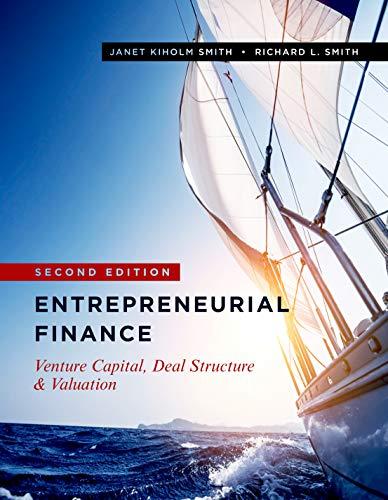Question
1. When Steven Simkin divorced Laura Blank, they agreed to split their assets equally. They owned an account with Bernard L. Madoff Investment Securities estimated
1. When Steven Simkin divorced Laura Blank, they agreed to split their assets equally. They owned an account with Bernard L. Madoff Investment Securities estimated to be worth $5.4 million. Simkin kept the account and paid Blank more than $6.5 millionincluding $2.7 million to offset the amount of the funds that they believed were in the account. Later, they learned that the account actually contained no funds due to its managers fraud.
Steven and Laura Selectdiddid not Item 1 have a contract.
2. The contract was related to their Selectprenuptial agreementdivorceretirement plansItem 2 .
3. Under the contract they agreed to split their assets Selectin proportion to their income while marriedequally regardless of marital incomeaccording to their prenuptial agreementItem 3 .
4. This contract Selecthasdoes not haveItem 4 all of the four required elements of a contract: agreement, capacity, consideration and legality.
5. When the parties learned that the Madoff account was worthless, who might want to get out of this contract? SelectLauraStevenItem 5
6. SelectLauraStevenItem 6 would want to get out of this contract because SelectLauraStevenItem 7 kept the worthless account and paid SelectLauraStevenItem 8 cash for one-half of the supposed value.
7. If a court does not enforce the contract between Steven and Laura, it is because of a lack of Selectconsiderationvoluntary consentwritingItem 9 .
8. If the parties had a voluntary consent problem, it was Selecta unilateral mistakea bilateral mistakefraudulent misrepresentationundue influenceItem 10 .
9. SelectSteven wasLaura wasBoth parties wereItem 11 mistaken as to the value of the Madoff account.
10. The mistake in this situation was a mistake of SelectfactvalueItem 12 .
11. This is a mistake of SelectfactvalueItem 13 because the parties were mistaken as to Selecthow the account was being managedthe value of what was in the accountItem 14 .
12. In a mistake in value case, the parties Selectassumedont assumeItem 15 the risk of the value changing, so that if the value changes, the parties cannot say it was a mistake.
13. In this situation, the parties Selectwerewere notItem 16 mistaken as to the actual value of the account, but it Selectwaswas notItem 17 because they assumed the risk of the account changing value between the signing of the contract and the completion of the contract. It was because the value in the account had been SelectstolenworthlessshiftingItem 18 .
14. A court Selectwouldwould notItem 19 likely rescind this agreement due to bilateral mistake.
15. Laura Selectwouldwould notItem 20 have to return the money she received under the agreement.
16. WHAT IF THE FACTS WERE DIFFERENT?
What if the account was properly managed but the stock market had dropped from the time the agreement was made until Steven had to pay Laura the cash?
Steven Selectcouldcould notItem 21 rescind the agreement.
17. Given these revised facts, the mistake would be a mistake of SelectfactsvalueItem 22 .
Step by Step Solution
There are 3 Steps involved in it
Step: 1

Get Instant Access to Expert-Tailored Solutions
See step-by-step solutions with expert insights and AI powered tools for academic success
Step: 2

Step: 3

Ace Your Homework with AI
Get the answers you need in no time with our AI-driven, step-by-step assistance
Get Started


